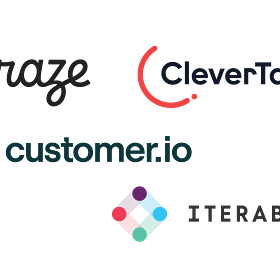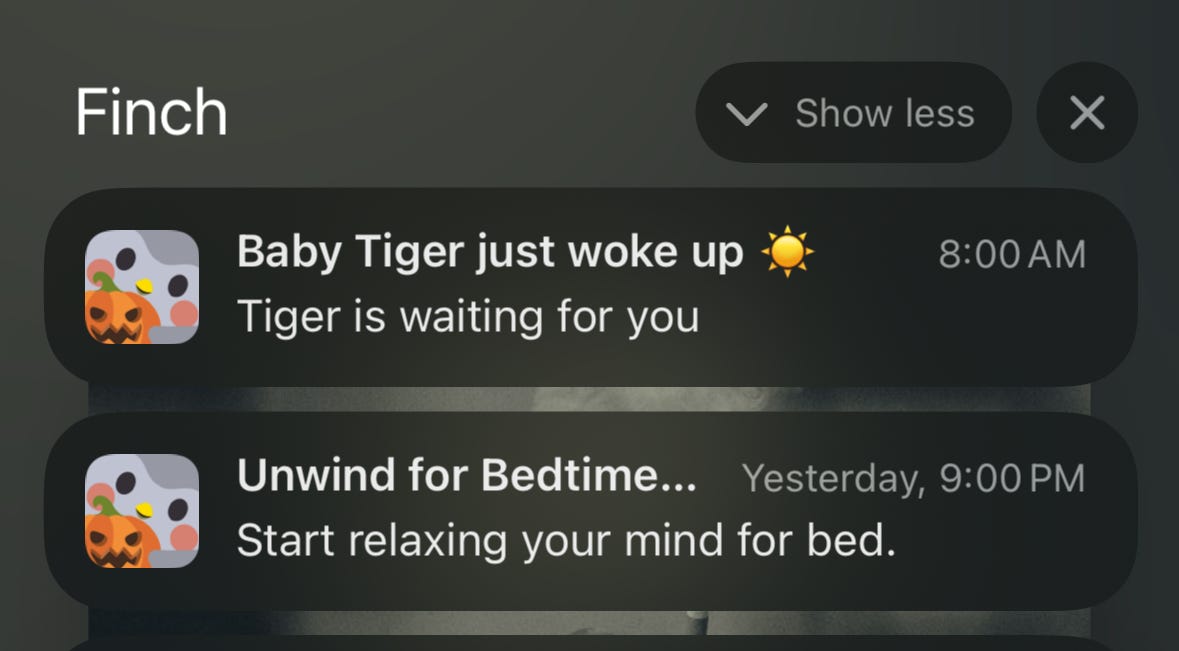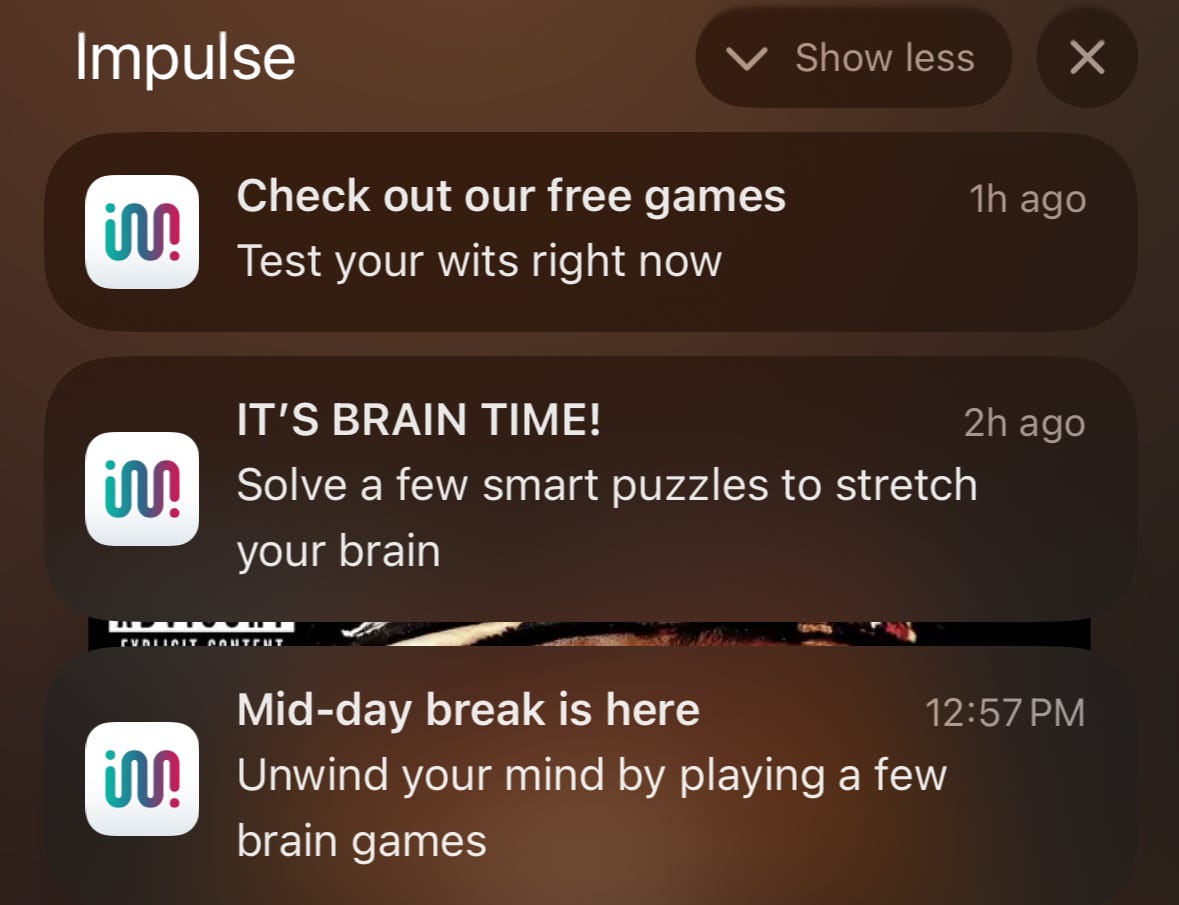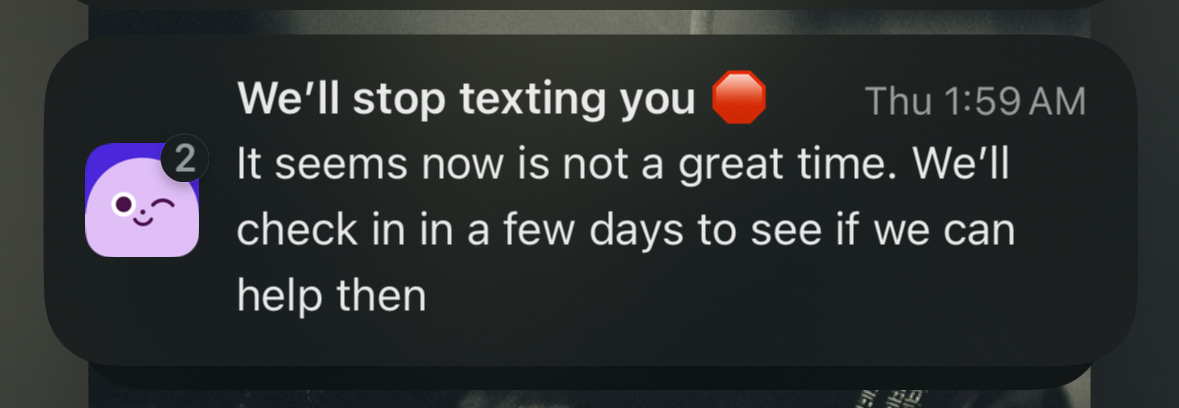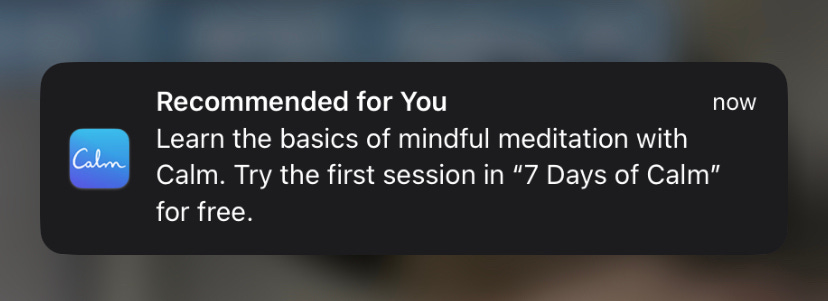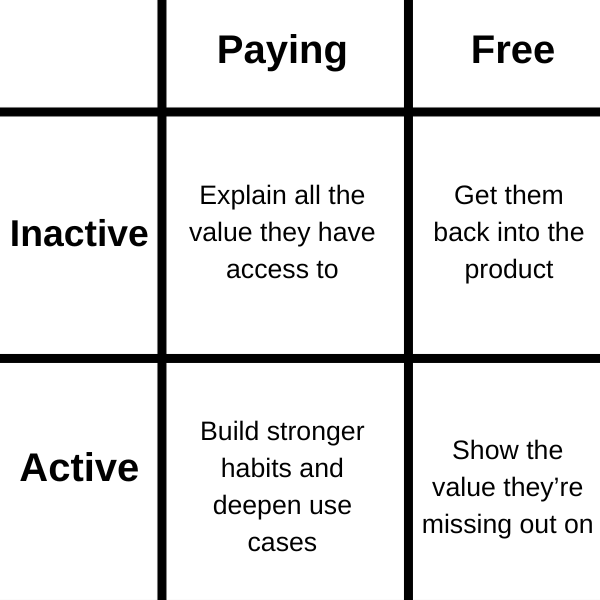Send these push notifications
📈 Try to move the needle with these tips
Hey there, it’s Jacob at Retention.Blog 👋
I got tired of reading high-level strategy articles, so I started writing actionable advice I would want to read.
Every week I share practical learnings you can apply to your business.
When should you add push notifications to your app?
After you have a new user flow that converts decently.
Push notifications aren’t going to make or break your product, but they can provide a nice little boost.
And they’re relatively simple to set up (compared to email).
You can try local notifications or push notifications.
Local notifications are usually decent for regular scheduled reminders that repeat.
Triggered push notifications usually give you a bit more control and are often sent via lifecycle marketing tools.
Start here on picking a tool:
Okay, so what notifications should we try sending?
After a new user closes your app and doesn’t convert, send them an offer.
New users have the highest intent to use your product, so don’t give up if they don’t start a trial immediately.
Moongate sends a notification pretty immediately after you close the app as a new user and offers you a discount.
Then, they follow up the next day with that same discount. People forget about things all the time, don’t assume they still don’t want to use your product.
Does your app have regular use case?
This certainly isn’t groundbreaking, but so many apps do it because it works.
Try to connect this reminders to real world use cases.
For sleep related apps, this is obviously easier:
But usually, there is someway to connect your app to regular use that is helpful to your user:
Price Power Podcast New Episode!
This is Retention.Blog, but we talk about monetization too. We launched the Price Power Podcast to talk about pricing and monetization, but also talk about all things subscription apps…
We had Ashley Black, Google Ads expert on to talk about optimizing your Google App Campaign.
What you’ll learn
The most common mistakes when moving from CPI/CPA to tROAS (targets too high, windows too long)
How to set a realistic ROAS target (start ~20% below goal) and ramp it without killing volume
Volume prerequisites for value bidding (why you need revenue events, not just trials)
and more!
Listen here:
➡️ Spotify 🔗
➡️ Youtube 🔗
➡️ Apple Podcasts 🔗
If someone isn’t engaging, you can then stop sending these messages if you worry about uninstalls.
Sometimes this type of message (“we’ll stop now”) is actually pretty effective to drive action:
This is a good reminder, be human and have a personality in your messages.
Sure, you can get some performance out of generic reminders, but try to bring some excitement or emotion into your notifications.
This another I love from Ahead:
Even if I don’t respond to this immediately, I’m going to read it and it’s going to put a smile on my face.
There’s no A/B test that will prove this, but if can put a smile on someone’s face you’ve greatly increased the chance of them using your product.
Remember, humans are driven by emotions.
Okay, what else do we got?
AllTrails recommendation notification is programmatic and personalized to my location.
You don’t need to get this fancy to start. Will personalized recommendations likely improve performance? Yes, but simply using the words, “Recommended for you” I’ve found to be powerful.
Calm’s recommendation is not personalized. It’s just a generic meditation.
But they’ve also seen that push title copy works well.
Try it out.
This is a triggered notification that is meant to drive towards a first setup step or activation moment.
Coinstats knows that they need you to connect your portfolio before they can provide real value.
This notification is sent pretty soon after I closed the app the first time without setting up my portfolio.
So you don’t just want to “Welcome” someone into your app, you want to drive them towards the next best action.
Not ground breaking either, but re-engagement type notifications usually work at least a little bit.
Test out different copy here.
We’ve seen in the past referencing the specific number of days they’ve been gone for can work well: “It’s been 7 days”
It’s not fool proof, so test it out.
Don’t just send one sale message.
You need to send a few, and try to add sense of urgency and excitement in each one.
They do a decent job of trying to get you excited.
Want more push notification advice?
I’ve got some here in a past blog post.
Here’s a snippet from this past post to expand on sale notifications:
Tips on sale notifications:
Keep them simple and communicate the offer upfront.
Don’t get too cute. You shouldn’t need clever language if the offer is good
Adding a sense of urgency or that this offer is special can work well e.g. “ending soon” or “best offer ever”
Send multiple sale messages, but don’t overload users. 2-3 is good
Sale announcement, sale ending soon, and if it’s a longer sale you could also send a sale ending in 24 hours
You may want to reserve the 24-hour message for people who have clicked or engaged but have not purchased
You can also offer a discounted subscription a few days after someone signs up.
The longer you wait, the lower the conversion will be. But the lower the cannibalization of people who would have bought full price.
A/B test it, but often showing a discount nearly immediately if someone doesn’t convert on the first paywall will drive more revenue than waiting. People lose excitement after the first day. Or forget and lose interest entirely.
Retention.Blog is sponsored by Botsi:
For the last year and a half, I’ve been working on building a company.
That company is Botsi. We power AI Pricing for your subscription app.
How does AI Pricing Work?
First, you’ll tell us what price points and paywalls you have
Second, you’ll send us some contextual and behavioral data on new users
Third, we’ll send you back the right paywall to show each user (in real-time)
Schedule a demo at Botsi.com →
P.S. When you schedule a demo and mention Retention.Blog you’ll get 20% off.
📣 Want to help support and spread the word?
Go to my LinkedIn here and like, comment, or share my posts.
OR
Share this newsletter by clicking here.




